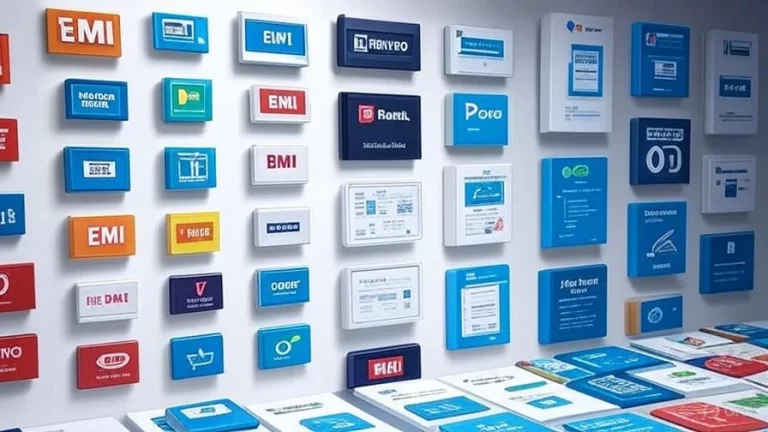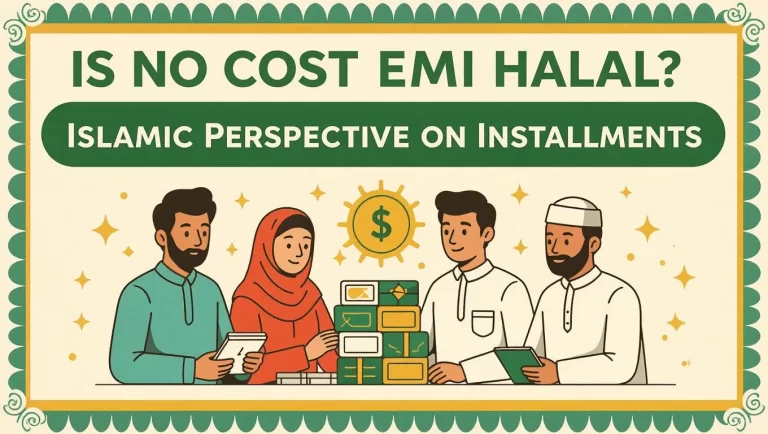What Is No Cost EMI: Guide to Benefits & How It Works
Ever wondered what is no cost EMI and why it’s everywhere during sales? It’s that tempting offer where you can buy a pricey gadget or appliance and pay in monthly chunks without extra interest slapping you. Sounds like a dream, right? But like most financial tricks, there’s more under the hood. In this guide, we’ll unpack what is no cost EMI, how it really works, the good and bad sides, and tips to decide if it’s for you. Whether you’re shopping on Flipkart or using your credit card, we’ll cover it all in plain talk. By the end, you’ll know if it’s a smart pick or a sneaky trap.

What Does No Cost EMI Mean?
Let’s start with the basics: what is no cost EMI? It’s a payment plan where you split the cost of something into equal monthly installments (EMIs) without paying any interest on top. The “no cost” part means the seller or merchant absorbs the interest, so you only pay the original price divided over months. For example, a Rs. 30,000 phone on a 6-month no cost EMI? You’d pay Rs. 5,000 each month, totaling exactly Rs. 30,000—no extras.
But here’s the twist: it’s not always truly free. Often, the seller gives you an upfront discount equal to what the interest would be, making it seem interest-free. In reality, banks or lenders still charge interest behind the scenes, but it’s offset by that discount. This is common on e-commerce sites or with credit cards.
What Is the Meaning of No Cost EMI in Everyday Shopping?
Diving deeper, what is no cost EMI in the context of your daily splurges? It’s like borrowing money without the usual bite of interest rates, which can be 12-18% on regular EMIs. Merchants use it to boost sales, especially for electronics, furniture, or holidays. You see it a lot during festive seasons—think Diwali deals where that new fridge is “interest-free” over 12 months.
The key is that the total you pay equals the product’s cash price. No hidden interest tacked on your bill. But watch out: sometimes, opting for this means you miss out on other discounts, like cashback for full payment. It’s great for budgeting, but only if you can handle the monthly hits without defaulting.
Is No Cost EMI Good?
Now, the big question: is no cost EMI good for you? It depends on your situation. On the plus side, it makes expensive stuff affordable without upfront cash. No interest means you save compared to regular loans. It’s handy for emergencies or planned buys, and it doesn’t ding your credit score if you pay on time.
But is no cost EMI really no cost? Not always. There might be processing fees (1-3% of the amount) or GST on the “hidden” interest. Plus, if the seller hikes the price to cover their discount, you’re not saving much. It ties up your credit limit on cards, and early closure could mean penalties. If you have cash earning interest in a savings account, paying full might be better. Overall, it’s good if you need flexibility, but crunch the numbers first.
What Is No Cost EMI Discount?
It’s the secret sauce that makes the “no cost” happen. Basically, the seller shaves off an amount from the price equal to the interest the bank would charge. For instance, if interest on a Rs. 10,000 item over 3 months is Rs. 500, they discount Rs. 500 upfront. You pay EMIs on the discounted price, but the total equals the original.
This discount is how merchants lure you in, but it’s funded by them or the brand. Banks still get their cut from the seller. The catch? You might not get this if you pay cash, so compare prices. Sometimes, the EMI version costs more overall due to no other offers.
How Does No Cost EMI Work on Credit Card?
Curious about how does no cost EMI work on credit card? It’s simple: you buy something on your card, then convert the transaction to EMI via the bank’s app or call. The bank charges interest, but the seller reimburses it as a discount, so your EMIs are interest-free.
Steps: Swipe for the purchase, check if it’s eligible (usually over Rs. 3,000), select tenure (3-24 months), and confirm. Your card limit drops by the full amount initially, freeing up as you pay. Banks like HDFC, SBI, or ICICI offer this, often with partners like Amazon or Flipkart. Just remember, GST on interest might apply, and missing payments hurts your credit.
What Is No Cost EMI in Flipkart?
If you’re an online shopper, what is no cost EMI in Flipkart? It’s their version where you pay in installments on eligible products without interest. Minimum cart value is Rs. 3,000, and it’s one per card per transaction. Flipkart partners with banks and cards like Axis or HDFC.
How it works: At checkout, choose EMI, select no cost option if available, pick tenure, and enter card details. The discount equals the interest, so you pay the listed price in parts. But some users complain it’s not always “no cost” due to hidden fees or lost discounts. Always read the T&Cs—foreclosing might cost extra.
What Is Low Cost EMI?
While we’re on EMIs, what is low cost EMI? It’s similar but with minimal interest, not zero. Rates might be 5-10%, making it cheaper than standard but not free. It’s an alternative if no cost isn’t available, often on longer tenures. Compare both—if low cost adds little extra, it could stretch your budget further without big hits.
Tips to Make the Most of No Cost EMI
To wrap up, here’s how to use no cost EMI wisely. First, compare the EMI price with cash price—ensure you’re not overpaying. Check for fees like processing or prepayment charges. Use it for needs, not wants, to avoid debt traps. Monitor your credit utilization, as it affects scores. And always pay on time—late fees can turn “no cost” into costly.
In short, what is no cost EMI? A handy tool for smart shoppers, but not magic. Weigh the pros against hidden bits, and you’ll shop stress-free.
FAQs
What Is Meant by No Cost EMI?
No cost EMI lets you pay for purchases in monthly installments without extra interest, as the seller covers it through a discount.
How Does No Cost EMI Work on Credit Card?
You buy with a credit card, convert the transaction to EMI, and the seller’s discount offsets the bank’s interest, so you pay only the principal monthly.
Is No Cost EMI Really No Cost?
Not always—hidden fees like processing charges or GST, or missing other discounts, can add costs despite no direct interest.






